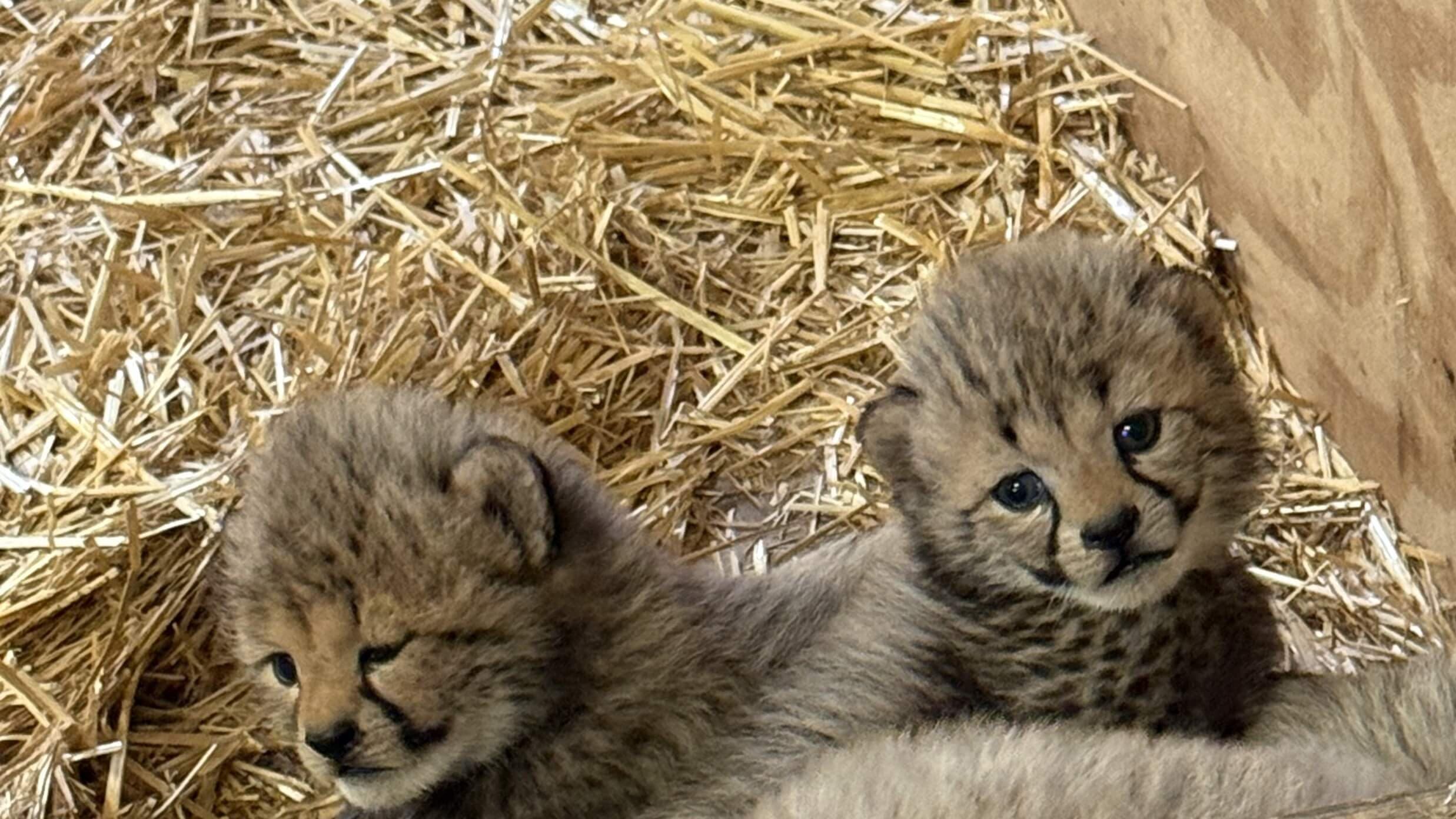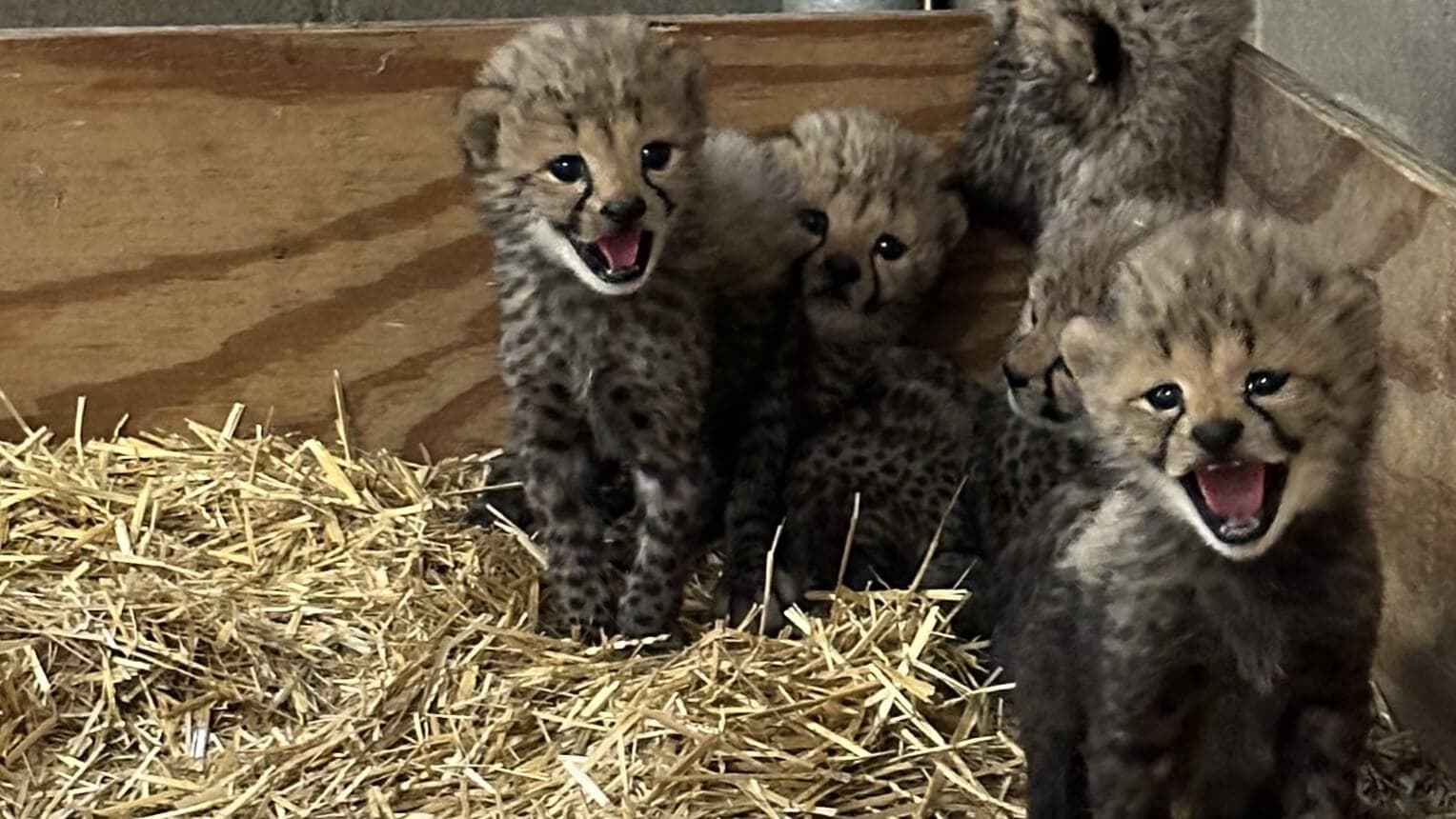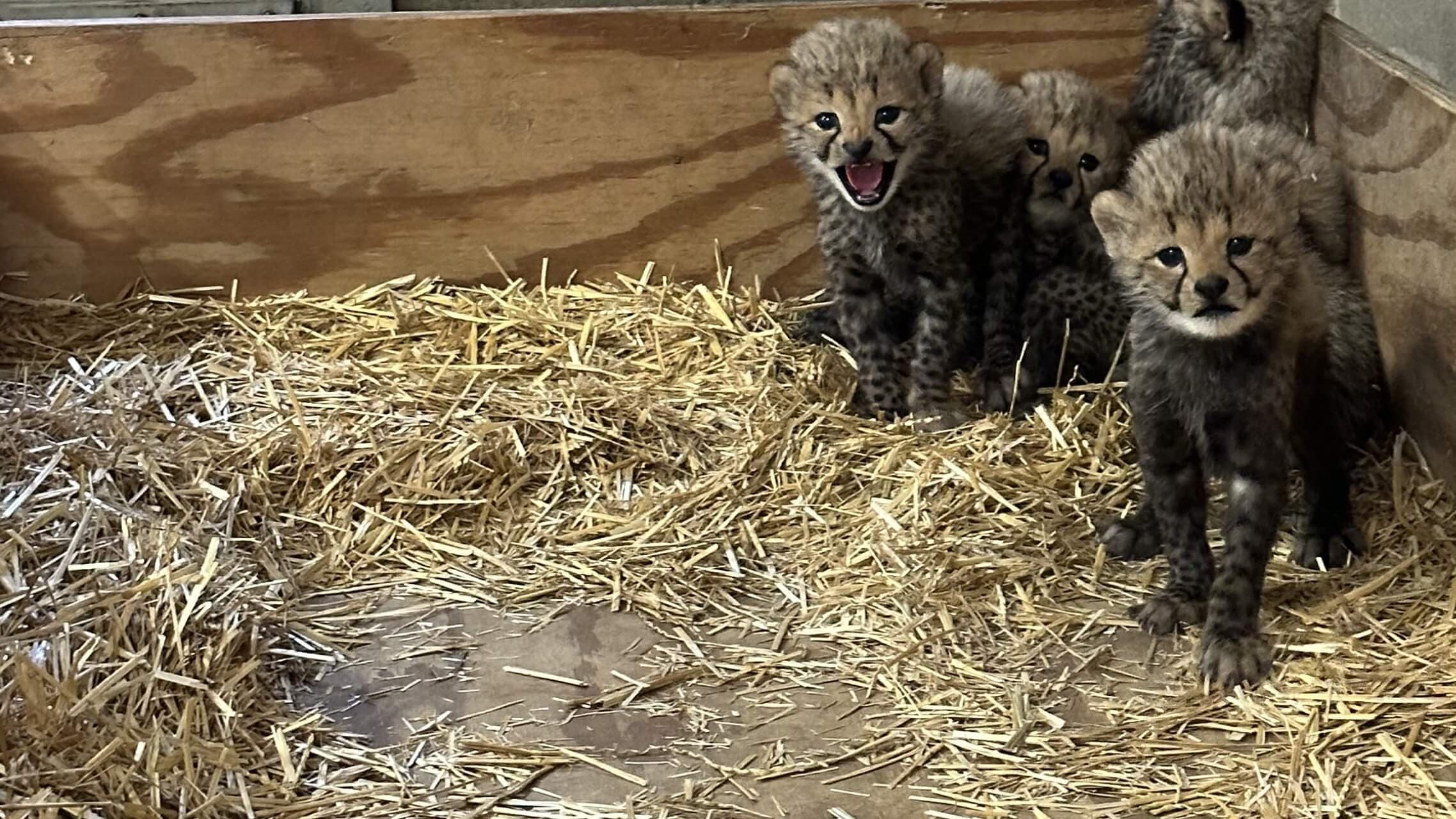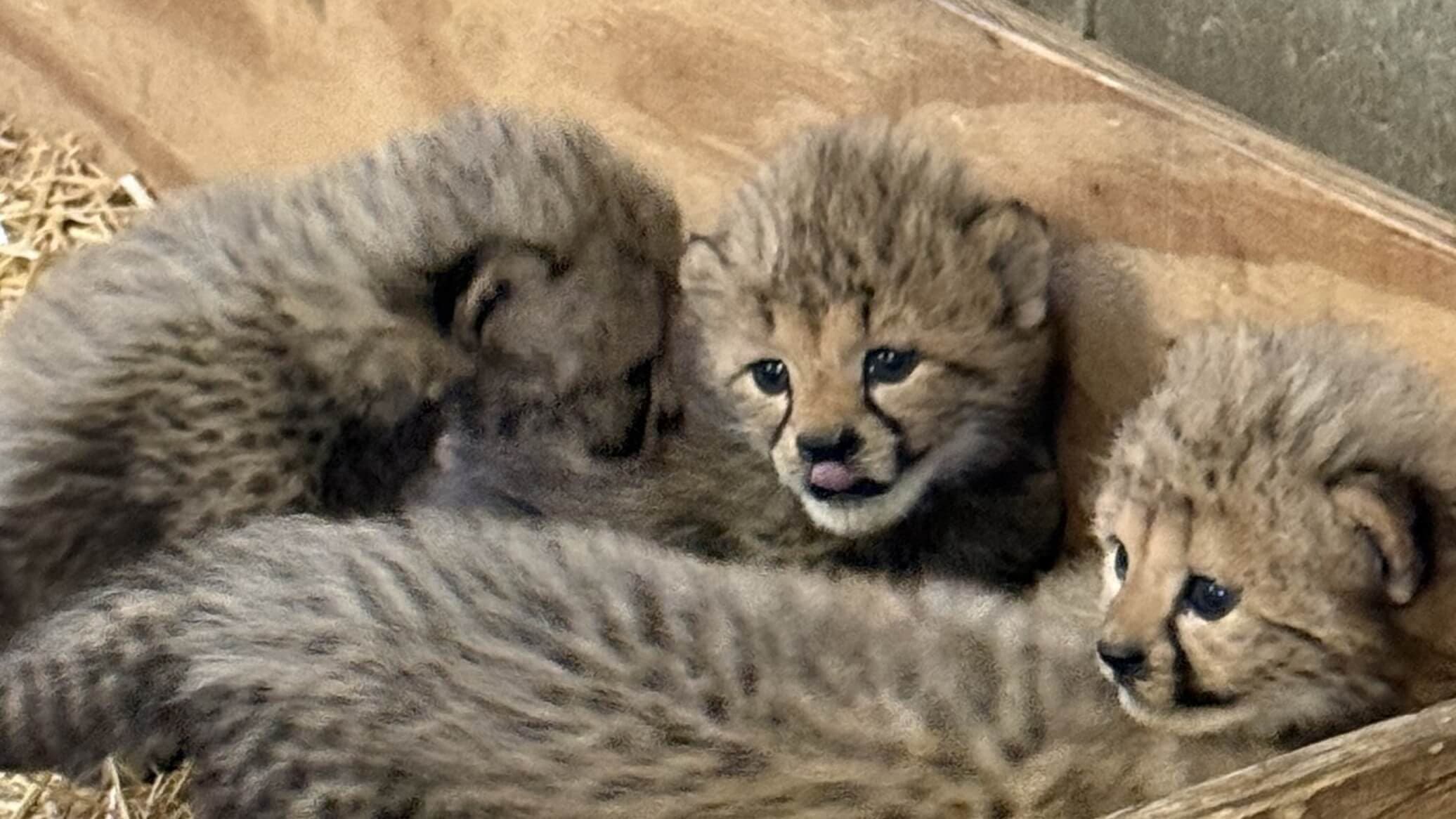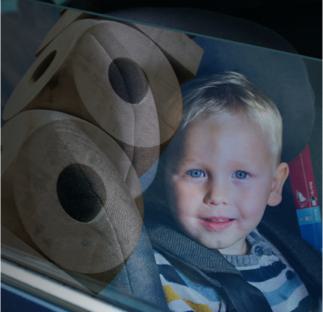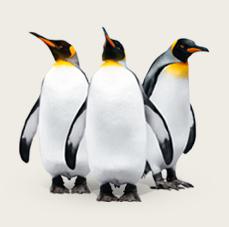Update: Sept. 17, 2025
Public Debut! Cora’s Quints are now exploring their public habitat during brief appearances in River’s Edge
Four-month-old quintuplet cheetah cubs—Asha, Bozzie, Chirpa, Milani and Wickett—are now making public appearances at the Saint Louis Zoo. The cubs and their mother gained access to the cheetah habitat at River’s Edge starting today, Sept. 17, 2025. The cheetah cubs will be visible for extremely limited hours over the next several weeks as they adjust to their new space. Cora and her quints will frequently have access to their public habitat first thing in the morning (typically between 9 and 10 a.m.). The Zoo is open from 9 a.m. to 5 p.m. daily, but there are no guaranteed times when the cubs will be visible.
The quintuplet cheetah cubs were born May 5, 2025, to first-time parents Cora, age 4, and Vader, age 8, and were soon dubbed “Cora’s Quints.” In their first months of life, the cheetah cubs have bonded closely with their mother and each other behind the scenes in a private habitat at the Zoo. The Animal Care Team has gradually introduced them to new enrichment and experiences to aid their development and prepare them for public debut.
“Cora’s cubs are lively as ever. They have distinct personalities and interact with each other like any siblings would—running, playing and wrestling under Cora’s close watch,” said Julie Hartell-DeNardo, the Saint Louis Zoo Kevin Beckmann Curator of Carnivores. “The cubs have approached each new enrichment with brave curiosity. We’re excited to see them explore this new habitat and for the public to meet this family for the first time."
All five cubs (three male and two female) are named after the Ewoks of Endor in honor of their parents, Cora and Vader, also named for Star Wars characters.


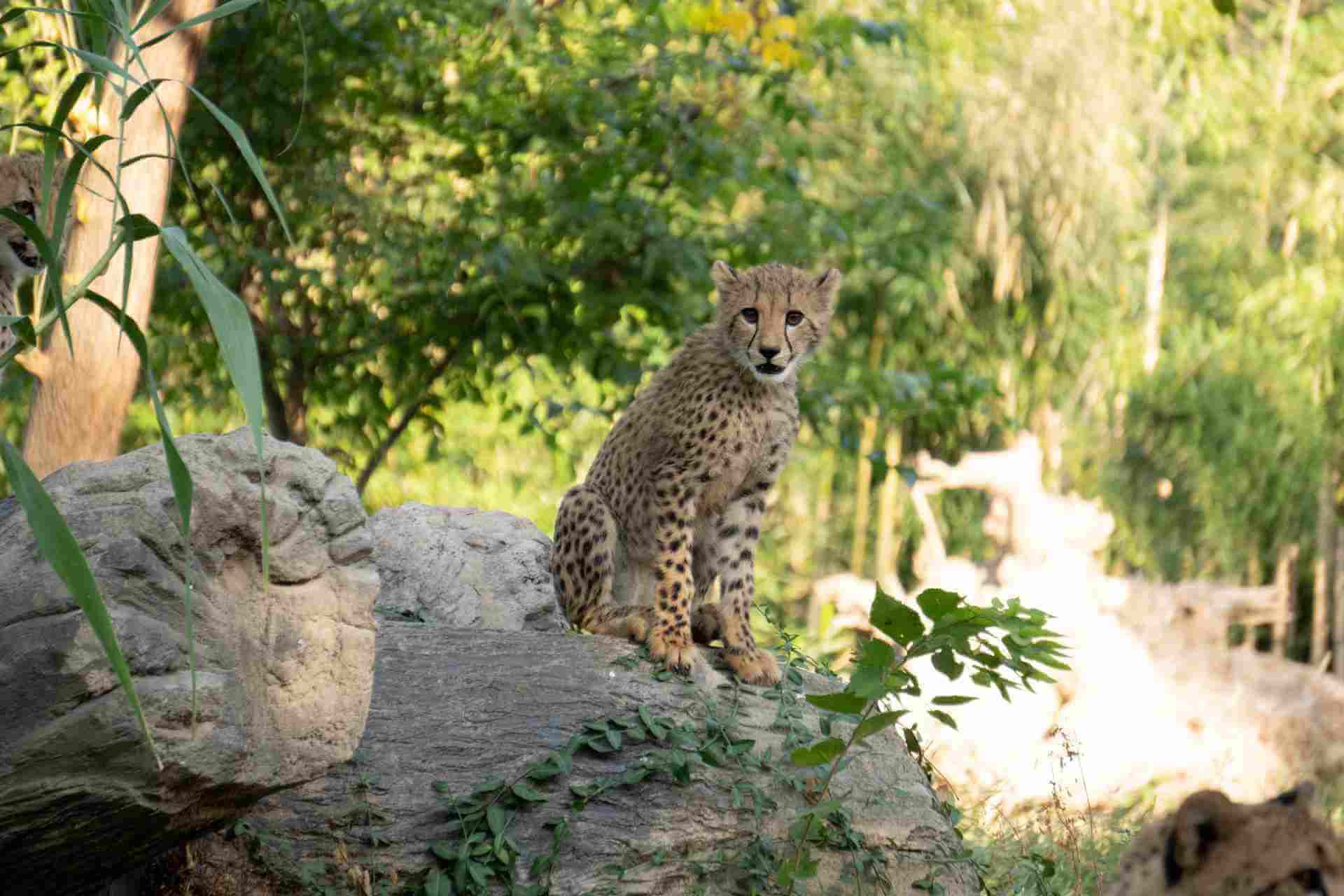

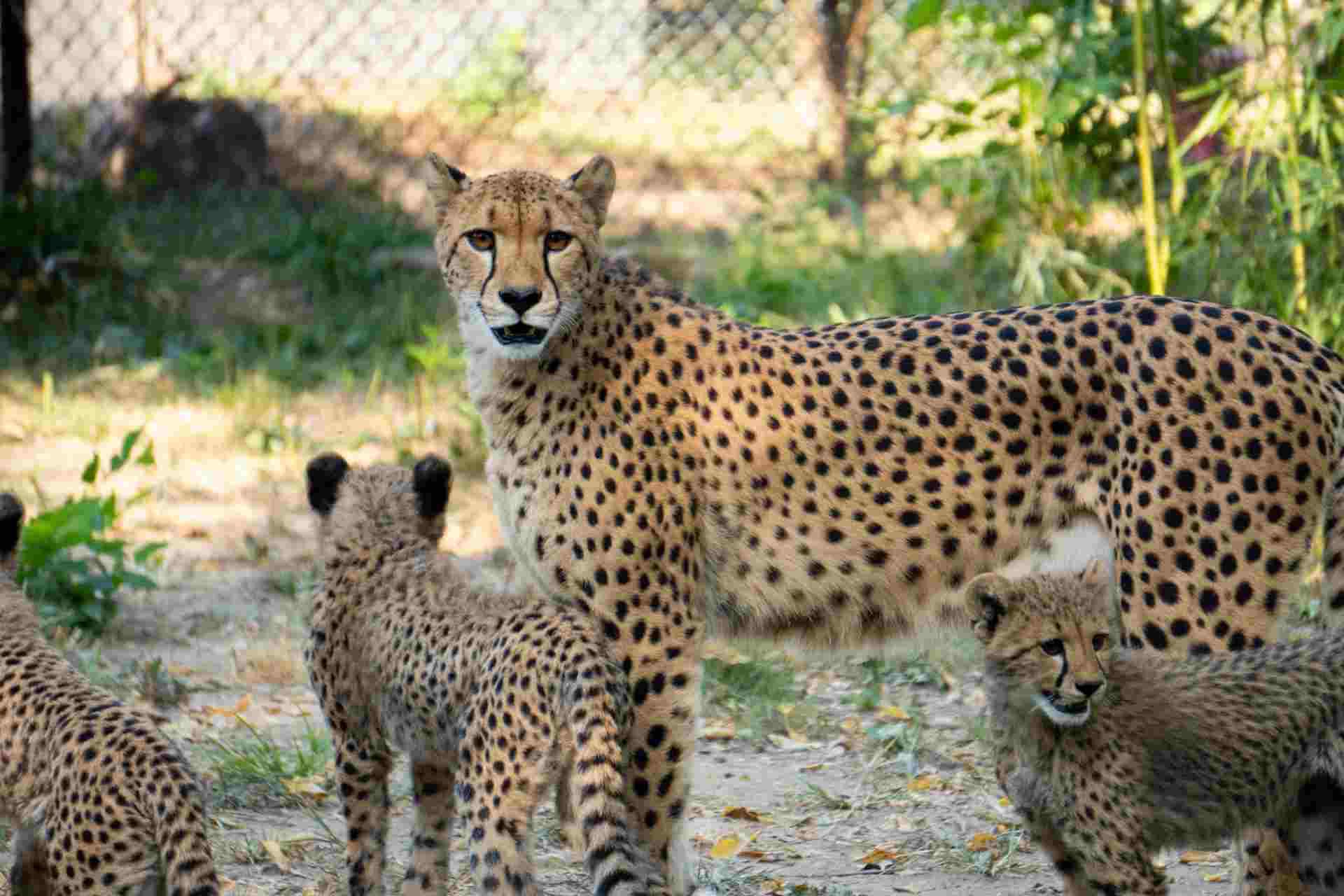
Update: Aug. 30, 2025
The cutest cheetah cubs in the galaxy! 🐾🌌
Cora’s quints are already 3 months old! Wicket, Chirpa, Bozzie, Asha and Malani (named after Ewoks in Star Wars) are harnessing the power of The Force and learning from Jedi master Mom in their behind-the-scenes habitat.
Lately, the cheetah cubs are enjoying scented enrichment activities, including smelling and playing with banana leaves, sage, lemongrass and lavender.
They continue to bond and will be ready for their public debut later this year!
Update: July 23, 2025
May the floof be with you. Cora's Quints have earned their Rebel names 🐾✨ Say hello to Wicket, Chirpa, Bozzie, Asha and Malani! Named after the pint-sized Ewok heroes of Endor, this squadron of three male and two female cubs is already exploring the galaxy (aka their outdoor habitat). Keepers named these masters of cuteness in honor of their parents, Cora and Vader—both named after Star Wars characters.
Born May 5, Cora's Quints haven't completed their Jedi training yet, but these young Padawans will zoom into public view at River's Edge later this year.
Update: June 26, 2025
🔉Sound on! The new cheetah quintuplets at the Zoo have the most adorable chirps! They're learning to vocalize and communicate, which is an important part of their development. These tiny cubs are letting their caregivers know they are fierce creatures!
June 5, 2025
ST. LOUIS (June 5, 2025) — A litter of five cheetah cubs was born at the Saint Louis Zoo River’s Edge Cheetah Breeding Center on May 5, 2025. The cubs are the first successful cheetah births at the Zoo in more than seven years and are a significant contribution to the population of cheetahs in North American zoos.
This is the first litter for first-time parents Cora and Vader. "Cora’s Quints” are all doing well and bonding with her in a private maternity den. It will be several months before the cheetah family makes a public debut at the age when cubs would naturally leave the den with their mother.
"We're thrilled to see Cora, a first-time mother, taking great care of her newborns. The average litter size for cheetahs is three to four cubs, though it’s not unusual for quintuplets to be born," said Julie Hartell-DeNardo, Kevin Beckmann Curator of Carnivores, Saint Louis Zoo. "Each recommended cheetah birth is significant for the survival of this vulnerable species. Our dedicated Animal Care teams have been instrumental in these successful births from the pairing and introductions of Cora and Vader to the family’s dietary needs, hormonal analysis for pregnancy monitoring, veterinary care, preparing a maternal den and so much more," said Hartell-DeNardo.
The first few months of life are critical for newborn cheetahs. The Animal Care team is monitoring the cheetah family via camera allowing them to watch Cora develop into an attentive mom —cleaning, nursing the cubs and keeping them warm. In the coming weeks, the cubs will receive their first well-baby check by the Zoo’s Veterinary Care team. Since the mother is keeping the litter close for the time being, that will be the first chance for the care team to determine the sex of each cub. The Zoo will wait until after the exam to name the cubs.
Species Survival Plan
Cora, age 4, and Vader, age 8, moved to the Saint Louis Zoo in 2024 and 2022 from other Association of Zoos and Aquariums (AZA) zoos. The two were paired on a breeding recommendation by the AZA Cheetah Species Survival Plan (SSP), a program responsible for maintaining a healthy population of cheetahs in North American zoos.
Since 1974, the Zoo has been a leader in cheetah reproductive research and breeding. Over 60 cubs have been born at the Zoo’s Cheetah Breeding Center. In 2017, for the first time in Saint Louis Zoo history, a cheetah gave birth to eight cubs. This litter was well-known as the “Bingwa Bunch.” Two males of this litter still live at the Zoo. Bingwa and the rest of her litter have since moved to other AZA-accredited zoos.
Cheetah Conservation
The world's fastest land animal, the sleek, long-legged cheetah, faces a high risk of extinction in the wild. Historically, cheetahs ranged widely throughout Africa and Asia. Today, fewer than 7,000 cheetahs inhabit a broad section of Africa. Over the past 50 years, cheetahs have become locally extinct in at least 13 countries.
The Saint Louis Zoo WildCare Institute partners with Cheetah Conservation Fund to support the conservation of cheetahs in the wild. The fund works in Namibia and Somaliland to ensure the protection and future of this species.
“Cheetahs face many threats including conflict with livestock owners, illegal international trade, reductions in prey populations, and habitat loss and degradation. It is important to support informed and balanced conservation efforts that incorporate education, research, human animal conflict mitigation and support of local communities,” said Hartell-DeNardo.
The Zoo is also a partner of the AZA SAFE (Saving Animals From Extinction) Cheetah program, which supports increasing cheetah populations through collaborative conservation efforts.
More Information
Photos and updates will be posted at stlzoo.org/CheetahCubs and on the Zoo’s social media channels when possible.
About Saint Louis Zoo
Home to 12,000 animals, representing nearly 450 species, the Saint Louis Zoo is recognized worldwide for its innovative approaches to animal care and management, wildlife conservation, research and education. One of the few free zoos in the nation, the Saint Louis Zoo is the most visited attraction in the region. Accredited by the Association of Zoos and Aquariums (AZA), the Saint Louis Zoo is part of an elite group of institutions that meet the highest standards in animal care as well as provide fun, safe and educational family experiences. The Saint Louis Zoo and other AZA-accredited institutions collectively dedicate millions of dollars annually to support scientific research, conservation and education programs. For more information, visit stlzoo.org
###
Video of the cubs' first month:
